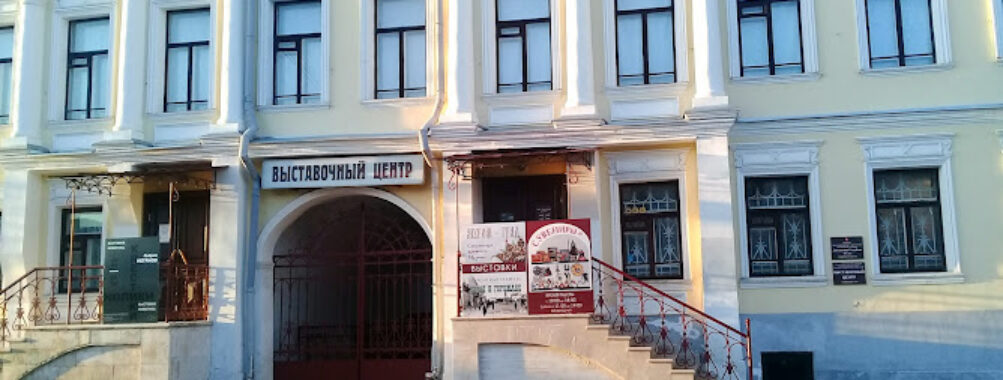
Murom History and Art Museum (Exhibition Center)
Table of Contents
Description
The Murom History and Art Museum’s Exhibition Center is more than just a collection of artifacts—it’s a living storybook of Murom’s past. Housed in the former mansion of the Golubev merchants, one of the most elegant and eye-catching buildings in town, the museum immediately sets a tone of charm and authenticity. The house itself feels like part of the exhibit, with its 19th-century architecture whispering tales of merchants, trade, and the daily rhythm of old Murom life. Inside, the exhibitions are thoughtfully curated, ranging from ancient treasures of medieval Rus’ to vivid glimpses of everyday city life in the 18th and 19th centuries. You can wander from a room filled with icons and artifacts that feel almost sacred, to displays that pull you into the world of shopkeepers, artisans, and townsfolk who once strolled these very streets.
What makes the experience stand out is the balance between scholarly depth and a warm, almost personal touch. The staff are well-trained and genuinely passionate, and it shows in the way they talk about the exhibits. Even if you’re not a history buff, the storytelling here has a way of pulling you in. Sure, the space isn’t massive—just a couple of halls—but sometimes smaller museums feel more approachable, less overwhelming. And honestly, that intimacy makes the exhibits easier to digest and appreciate. Of course, not every visitor leaves dazzled; some feel the space is too limited or wish for more interactive features. But the overwhelming impression is one of respect for the city’s heritage, and a sense that you’re stepping into something authentic and deeply rooted in Murom’s identity.
Key Features
- Permanent exhibition called Treasures of Ancient Murom, showcasing rare medieval Russian art and artifacts
- Exhibit City and Citizens, covering Murom’s history from the late 17th to early 20th century
- 1–2 temporary exhibitions that rotate throughout the year, often highlighting regional art or cultural themes
- Located in the historic Golubev merchant house, itself a significant architectural landmark
- Family-friendly environment, welcoming for children and school groups
- Restroom facilities available, though no on-site café or restaurant
- Assisted listening devices available for those who need them
- Not currently wheelchair accessible at the entrance
Best Time to Visit
Murom has a rhythm of its own, and the best time to visit the museum really depends on what kind of experience you’re after. Spring and early summer tend to be the sweet spot—the weather is pleasant, the town feels alive, and the museum often aligns its temporary exhibitions with cultural festivals in the region. I once visited in April, just as the town was shaking off the last of the winter chill, and the contrast of stepping into a warm, history-filled hall after walking through crisp air was unforgettable. Autumn is another strong contender, especially if you’re the type who loves pairing history with the moodiness of falling leaves and quieter streets. Winter visits have their own charm too, though the town slows down, and you’ll likely share the museum with just a handful of visitors. That can make it feel almost like a private tour.
How to Get There
The museum sits right in Murom’s historic center, so it’s hard to miss once you’re exploring the main streets. If you’re arriving by train, it’s a short taxi ride or a manageable walk from the station, depending on how much luggage you’re dragging along. Buses and marshrutkas (those minibus shuttles you see all over Russia) also drop you fairly close. Personally, I always recommend walking if you can—it’s the best way to soak up Murom’s atmosphere. The cobbled streets, the old houses, the little shops along the way—they all set the stage before you even reach the museum doors. Driving is an option too, though parking in the city center can be a bit tricky during weekends or holidays.
Tips for Visiting
First off, give yourself at least an hour or two. It’s not a huge museum, but rushing through would rob you of the details that make it worth visiting. If you’re traveling with kids, don’t worry—the exhibits are surprisingly engaging for younger visitors, especially if you frame it as a treasure hunt through history. And while there’s no café inside, I’d suggest planning a coffee stop at one of the nearby bakeries afterward—it’s a nice way to digest what you’ve just seen. For those who love photography, keep your camera ready but respectful; some exhibits may not allow flash. A little personal tip: if you can, join a guided tour. The guides here are not just informative, they’re storytellers, and they bring the objects to life in a way that static labels never could.
One thing to note—accessibility isn’t perfect. The entrance isn’t wheelchair-friendly, which can be frustrating, and it’s something the museum will hopefully address in the future. On the flip side, assisted listening devices are available, which is a thoughtful touch. As for crowds, weekdays tend to be quieter, while weekends bring in families and school groups. If you like a bit of buzz, go on a Saturday morning. If you prefer peace and space to think, aim for a midweek afternoon. And don’t skip the temporary exhibitions—they’re often the hidden gems that surprise you the most. I once caught a small exhibit of local folk art that wasn’t even on my radar, and it ended up being the highlight of my visit.
At the end of the day, the Murom History and Art Museum’s Exhibition Center isn’t about dazzling scale or flashy tech. It’s about intimacy, authenticity, and a genuine connection to the city’s soul. If you’re the kind of traveler who values depth over spectacle, this little museum should definitely be on your list.
Location
Places to Stay Near Murom History and Art Museum (Exhibition Center)
Find and Book a Tour
Explore More Travel Guides
No reviews found! Be the first to review!